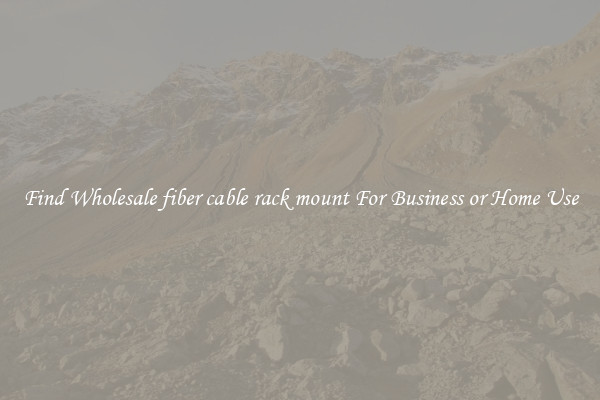Fiber Optic Equipment
Fiber Optic Equipment: Revolutionizing Connectivity

In today's digitally driven world, where seamless connectivity is a necessity, fiber optic equipment is playing a crucial role in transforming the way we communicate, transmit data, and access the internet. This technology has revolutionized the telecommunications industry and is paving the way for faster, more reliable, and secure connections.
Fiber optic equipment is a system that incorporates various devices and components to transmit and receive data through fiber optic cables. Unlike traditional copper wires, which transmit electrical signals, fiber optic cables use light signals to transmit information. This unique feature makes fiber optic networks significantly faster and capable of carrying a larger amount of data over long distances.
One of the key components of fiber optic equipment is the optical transmitter. This device converts electrical signals into light signals and injects them into the fiber optic cable. These transmitters are highly efficient and can deliver signals across vast distances without significant loss in quality.
The fiber optic cable itself is made of ultra-thin strands of glass or plastic, known as optical fibers. These fibers are designed to transmit the light signals, and each strand can carry multiple signals simultaneously. Moreover, because light signals are immune to electromagnetic interference, fiber optic cables are highly secure and resistant to data loss or degradation.
To receive the transmitted signals, fiber optic equipment also includes optical receivers. These devices convert the light signals back into electrical signals that can be understood by computers, telecommunication systems, or other connected devices. The receivers are designed to amplify weak signals and minimize any distortion or noise picked up during transmission.
Switches and routers are also essential components of fiber optic equipment. These devices manage and direct the flow of data within the fiber optic network, ensuring that packets of data are correctly sent to their intended destinations. Switches are responsible for connecting multiple devices within a local network, while routers are used to connect different networks together.
The benefits of fiber optic equipment are numerous and significant. Firstly, the incredible speed and bandwidth capacity of fiber optic cables allow for ultra-fast internet connections, supporting activities such as video streaming, online gaming, and cloud computing without any noticeable lag or delays. Secondly, fiber optic networks provide better reliability with minimal data loss or disruption, resulting in uninterrupted connectivity. Finally, fiber optic equipment offers enhanced security, as it is extremely difficult for hackers to tap into the light signals transmitted through the cables.
As technology continues to advance, the demand for faster and more reliable connectivity will only increase. Fiber optic equipment is at the forefront of meeting these demands by providing superior performance and unmatched capabilities in transmitting data. With its ability to revolutionize communication systems, fiber optic equipment has become a critical driver of progress in industries such as telecommunications, healthcare, finance, and more. It has truly paved the way for a connected world where information flows seamlessly, empowering individuals and organizations alike.

View details

View details

View details

View details







